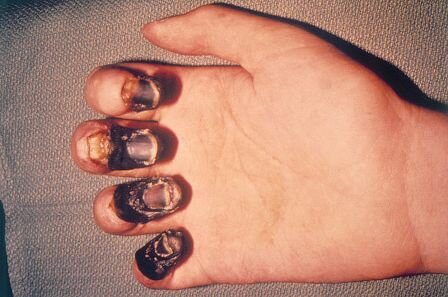These following facts about the Black Death would probably give you much information about the disaster. The Black Death was one of the most devastating pandemics in human history, resulting in the deaths of an estimated 75 to 200 million people and peaking in Europe in the years 1346-53. Although there were several competing theories as to the etiology of the Black Death, analysis of DNA from victims in northern and southern Europe published in 2010 and 2011 indicates that the pathogen responsible was the Yersinia pestis bacterium, probably causing several forms of plague. Furthermore, to get to know more about this pandemics, below are some other facts about the Black Death you might like.
Facts about the Black Death 1: Death Toll
The exact death toll is difficult to measure from medieval sources. The number of deaths varied considerably by area and depending on the source. Current estimates are that between 75 and 200 million people died from the plague
Facts about the Black Death 2: Europe Population
The Black Death followed a period of population growth in Europe which, combined with two years of cold weather and torrential rains that wiped out grain crops, resulted in a shortage of food for humans and rats. This caused people and animals to crowd in cities, providing an optimal environment for disease.
Facts about the Black Death 3: Trading Ships
In November 1347, a fleet of Genoese trading ships landed in Messina, Sicily after trading along the coast from the Black Sea to Italy. The ships carried dead and dying sailors, many of whom had strange black growths on their necks, in their armpits, or in their groins. Many coughed blood. Those who were alive died within days.
Facts about the Black Death 4: Varieties of Plague
Yersinia Pestis causes three varieties of plague: bubonic plague, caused by bites from infected fleas, in which the bacteria moves to lymph nodes and quickly multiplies, forming growths, or buboes; pneumonic plague, a lung infection that causes its victim to cough blood and spread the bacteria from person to person; and septicemic plague, a blood infection that is almost always fatal.
Facts about the Black Death 5: Aftermath of the Plague
The aftermath of the plague created a series of religious, social, and economic upheavals, which had profound effects on the course of European history. It took 150 years for Europe’s population to recover. The plague recurred occasionally in Europe until the 19th century.
Facts about the Black Death 6: Prevention
Other ways purported to prevent or cure the plague were to be happy and avoid bad thoughts, drink good wine, avoid eating fruit, put fragrant herbs in beverages, avoid lechery, do not abuse the poor, eat and drink in moderation, maintain a household in accordance with a person’s status, and so on.
Facts about the Black Death 7: Bathing
Bathing during the plague was discouraged for two reasons. First, along with changing clothes, it was a sign of vanity, which invited the wrath of God and the punishment of sin. Second, bathing was believed to open the pores, making it easier for bad air to enter and exit the body, spreading disease. The latter belief was common throughout Europe well into the the nineteenth century.
Facts about the Black Death 8: Third Pandemic
A third pandemic began in China and India in the 1890s and eventually reached the United States, with infections being especially dangerous in the San Francisco Bay Area. It was during this pandemic that the real cause (Yersinia Pestis) was discovered, along with a cure.
Facts about the Black Death 9: Symptoms
Contemporary accounts of the plague are often varied or imprecise. The most commonly noted symptom was the appearance of buboes (or gavocciolos) in the groin, the neck and armpits, which oozed pus and bled when opened.
Facts about the Black Death 10: Great Plague of 1665
After the Black Death, plague epidemics continued to ravage Europe. For example, London was struck by the Great Plague of 1665, with thousands of deaths. This plague was followed almost immediately by the Great Fire, leaving London devastated.
Hope you would find those Black Death facts really interesting, useful, and helpful for your additional reading.









